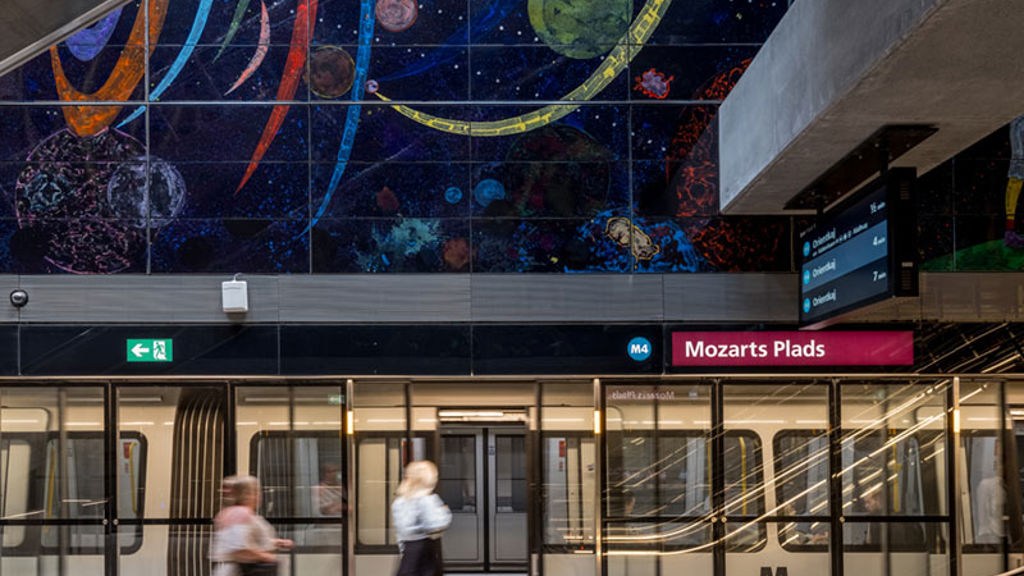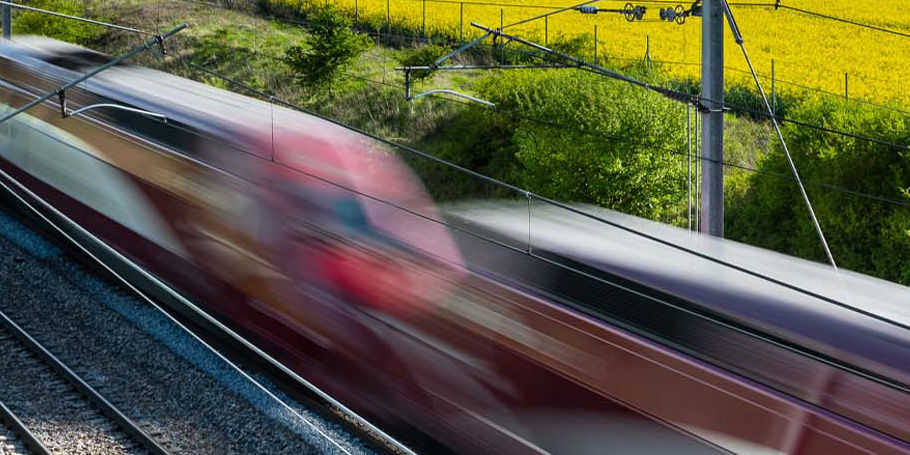Copenhagen has a growing population and a pressing need for new homes. The city's proposed solution is Lynetteholm, a new island by the harbour, that will provide 20,000 homes, create new jobs, provide a barrier against rising sea levels, and be made from recycled materials from other construction projects.
Connectivity to the city will be key, so we are working with our client, the Copenhagen Metro (Metroselskabet), on an early feasibility study to design the most efficient, effective and sustainable metro line, M5.
Envisioning a new metro
In collaboration with Metroselskabet, our work has explored the feasibility of three distinct metro line options, as well as the overall concept design for the new stations. The study comprises 25 station designs, including 5 interchange stations linking into the existing metro and mainline network, plus five possible depot solutions.

We used the UN SDGs to explore how different stages of the project might offer additional opportunities to produce wider long-term benefits for passengers, the city, the client and the environment. With our client and key stakeholders, we workshopped a range of design interventions that could be made throughout the project lifecycle, to maximise sustainable development outcomes throughout the value chain. These project-specific targets will ensure the designs will be cost-effective and efficient to maintain, minimise carbon emissions, be accessible to every age and ability, optimise the use of water, and encourage increased use of public transport.
Sustainable design. Compelling passenger experience.
Our concept builds on the beautiful yet functional simplicity of the city’s existing metro lines, both in construction and design. We have reused the kit-of-parts approach we used on other lines on the Copenhagen Metro, to reap the whole-life benefits of off-site manufacture and modular assembly of the compact stations, ensuring minimal environmental impact. The station design and canopy roof will optimise natural lighting underground, while eliminating the need for station ventilation, helping to enhance the passenger experience. The compact station and cut and cover tunnelling design have been optimised to reduce construction costs and footprint
This project needs to set new low emission standards so by using our own digital carbon emissions analysis – which links BIM models to whole-life carbon calculations – our team was able to identify carbon hotspots early on and develop strategies to minimise the stations’ carbon footprint. The result is a series of unique metro design options comprising shallow underground stations with less concrete, one of which could lead to a saving of up to 55% of embodied carbon. Sustainable design like this can also produce enjoyable experiences, and passengers will experience a sense of traveling through an ‘underground urban square’.
Designed to shape behaviour
Meeting net-zero emissions targets means continuing to make public transport more appealing than private vehicles. The new line builds on the user-centred design approach we applied to the M3 and M4 lines, constructed by Metroselskabet. Together we optimised the station layout and user-journey to deliver the best passenger experience from street to train, using the same intuitive wayfinding, direct lines of sight, and platform lengths.

At street level, stations are designed to weave seamlessly into the surrounding communities, connect with other transport modes, and complement existing or future local businesses. Connecting passengers easily and quickly to the existing metro and mainline network meant overcoming complex engineering challenges at three of the five interchange stations. One of our solutions at Islands Brygge was to configure the design to provide the most direct, fully accessible route for passengers transferring between the existing M1 line and the new line. This was enabled by locating a new platform directly below the existing shallow platform – a technically challenging design solution – while demonstrating that construction could be undertaken with minimum disruption to the operational railway. These continuities will help to cement the new island as part of the wider Copenhagen community and mean the new line can drive economic growth and social connections.
Preparing for the city’s next chapter
Copenhagen’s continued growth means flexibility for subsequent development is vital. We have designed ground-level station infrastructure, such as elevators, so that it can be easily retrofitted into any later development that may arise around or above the stations. We have also developed a suite of designs for the control and maintenance centres (CMCs) to enable potential over-site development above and around these large buildings. Whereas in the past these depots have resulted in large areas of cities being unusable for development and unpassable for traffic and pedestrians, our designs will allow the CMCs to be integrated into the city’s growth.
M5 is an exciting project for many reasons. Not only does it show how the challenge of climate change can drive investment in beneficial urban development, but it also demonstrates the central role a sustainably developed metro system can play in producing a city that works for all.
What we delivered
-
Accommodating future population growth with forward facing metro rail design
-
Taking a sustainable build approach to reduce embodied carbon
-
Driving investment for urban development that works for everyone
Get in touch with our team
Projects
Explore more metro and light rail projects

Realising a low-emission, efficient public transit vision for the Danish capital
Copenhagen Metro, Denmark

An ambitious station modernization program for New York’s subway system
MTA Enhanced Station Initiative, United States of America

Providing technical advisory for Parramatta Light Rail
Parramatta Light Rail Stage 1, Australia

Designing Sydney’s first integrated station development
Sydney Metro Martin Place integrated station development, Australia
Get in touch with us
If you'd like to speak to one of our rail experts about any of the issues raised on this page or a potential collaboration then please get in touch by completing the form.



